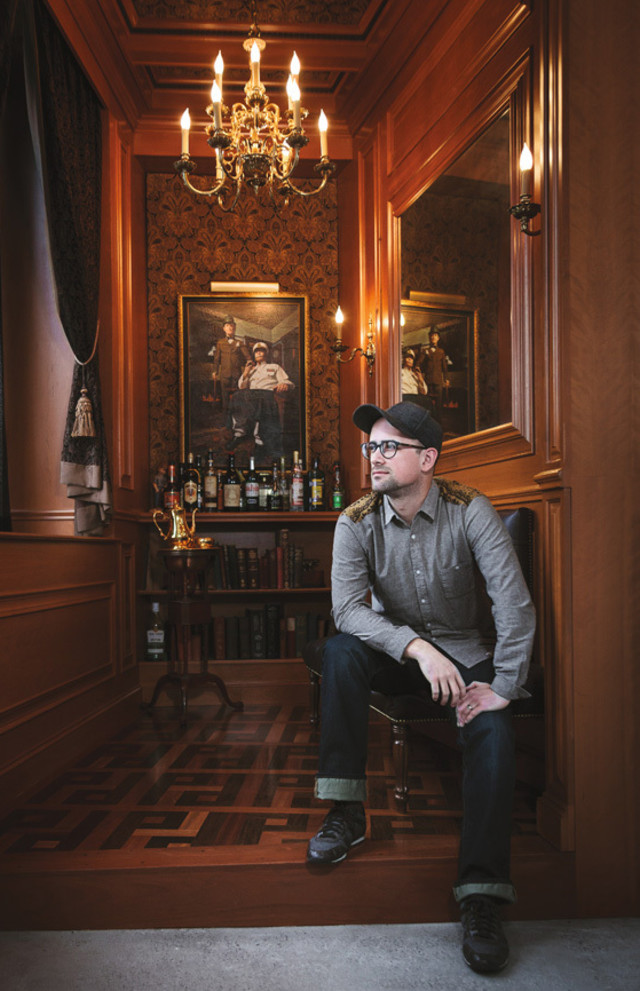Panic's High Tech Passion

Cabel Sasser in Panic’s “phone closet”
Image: Nicolle Clemetson
“It’s Christmas Eve, and I get an e-mail from Steve Jobs, saying, ‘Hey Cabel, any interest in throwing in with us?’”
Cabel Sasser is telling the story of how he almost sold out. Almost. In 2000, Apple’s founder approached Sasser’s company, Panic, a software start-up that created apps (before anyone used the word “apps”) exclusively for Macs (when few people used Macs). Jobs offered to develop Panic’s new MP3 player into what would eventually become iTunes. Sasser and his partner turned him down.
“I could have had six palaces by now,” he says. “But I don’t regret it.”
I believe him. Panic’s offices on SW 11th Avenue feel like the light, frisky counterpoint to corporate seriousness. The former parking garage is now an adult playroom with bright, colorful spaces lit by large banks of windows. On the rooftop, Panic created a surreal urban oasis: rolling hills of foam and turf, overlooking downtown. Then there’s the trapezoidal “phone closet,” featuring a full bar and a tongue-in-cheek oil painting of Sasser and his cofounder and childhood friend Steve Frank. (“It’s amazing what you can get from China.”) It’s what Jobs himself might have built if he’d been more into chaos than creative control.
“You have to balance design and function,” Sasser says. Since 1998, Panic has made unglamorous tools beautiful. Panic’s flagship products are Status Board, a data-display app; Coda, a code editor; and Transmit, a file-transfer utility. Panic’s designs for these utilitarian products are lavish, reflecting a painstaking ethos and pace. Its large-scale releases absorb years of work. Panic operated in a Southeast Portland apartment for more than a decade before moving to its downtown abode, and a single new hire can take up to six months. (“Talent is one thing,” Sasser says, “but are they good people?”)
This low-speed approach reflects Sasser’s philosophical take on business. During Portland’s XOXO tech festival last September, Sasser riveted the crowd with an emotional talk about accepting that Panic, his life’s work, could someday cease to exist. Sasser laid out stark possibilities: any new company will eventually either flame out, fade out, or sell out.
For Panic, selling out seems unlikely: besides spurning Jobs, Sasser has also declined an overture from Facebook’s Mark Zuckerberg. As Sasser shows me to the door, we walk over neat rows of oil stains from cars that parked on the concrete floor long ago. It occurs to me that there may be a fourth choice for Panic’s fate: live on.




